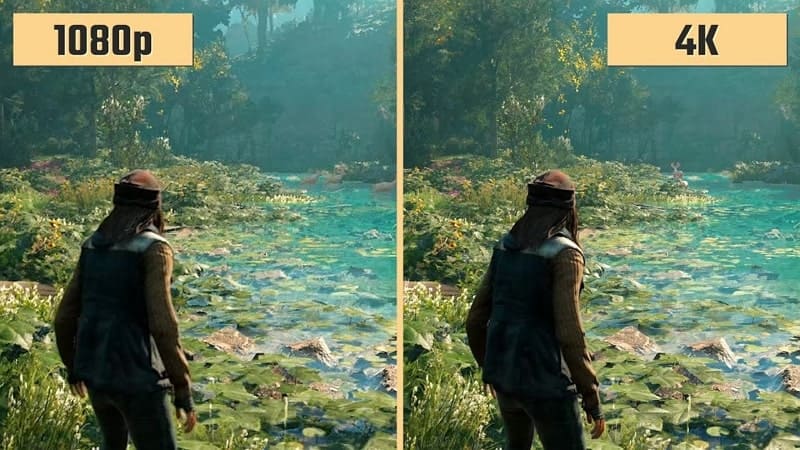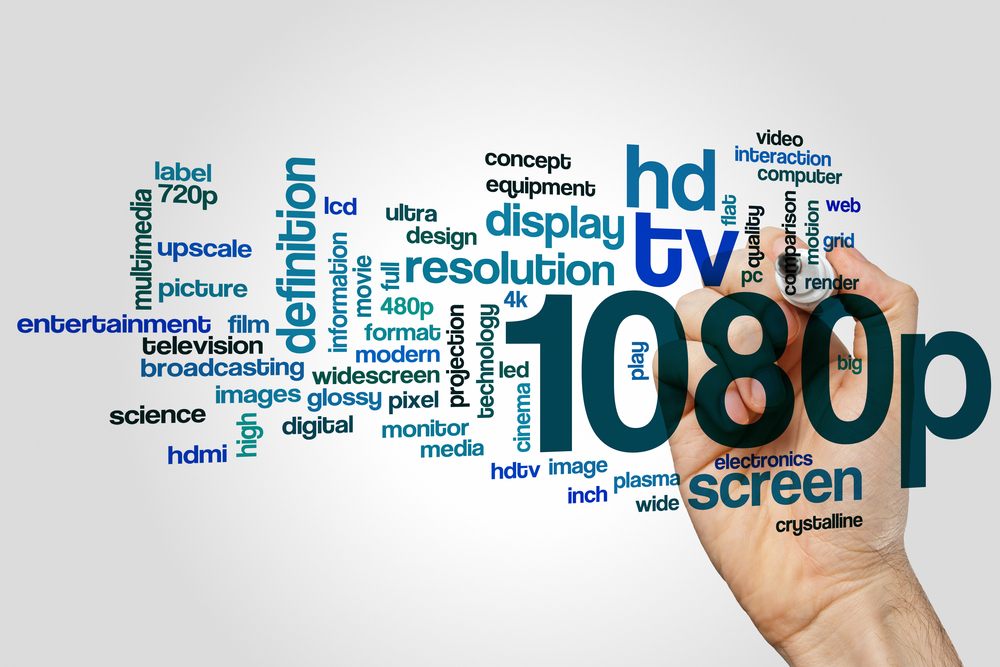People prefer high resolutions while watching television or having video calls for a realistic viewing experience. In this regard, 4K resolution can provide great detail and clarity, making it ideal for large-screen displays. Plus, it has a significantly higher pixel count than 1080p. Still, people often talk about which resolution is better than another.
Several factors need to be put side by side for such a comparison, as this article will help you know all about 4K vs. 1080p. We will also introduce you to ZEGOCLOUD, a platform that provides APIs for the integration of 4K and 1080p live stream and video conferencing features in websites and apps.
Understanding the Basics: Explaining 4K and 1080p
In videography, both video qualities are the most frequently used resolutions. They define the number of pixels used for an image or video to display on screen. Therefore, it is essential to understand what these two standards refer to in the context of visual content. Furthermore, you will learn the difference between 4K and 1080p resolutions after having an insight into these.
1. 4K
The term 4K refers to the horizontal pixel count, where “K” signifies the number 1000. However, this resolution refers to 3840 horizontal pixels and 2160 vertical pixels. When we compare 4K resolution vs. 1080p, it is approximately four times more in pixel count. As a higher number of pixels can give a higher resolution, the resulting visual is more remarkable in clarity and sharpness.
Moreover, it often comes equipped with HDR technology, resulting in vibrant images and videos. All these factors have made this resolution popular among several streaming apps, including Netflix, Disney, and Amazon Prime, which reflects extensive adoption of this resolution.
2. 1080p
1080p, also known as FHD or Full High Definition, represents 1920 pixels across the screen horizontally and 1080 pixels vertically. This industry-standard resolution doesn’t consume as much storage space or bandwidth as 4K. Still, it can offer clear results while having fewer pixels. Moreover, the reduced bandwidth consumption and size make it faster to load and transfer.
This resolution is commonly used for computer monitors, HDTV, and digital content that can provide fine-quality results. In addition, Blu-ray discs also use it as their native resolution, which displays adaptability.
What Sets Apart 4K Video from 1080p Video: A Differential Comparison
Undoubtedly, there is a clear difference in quality when comparing 720p vs. 1080p vs. 4K. However, numerous other factors also impact the decision of which one provides better. For this purpose, the table below will help you better comprehend the 4K resolution vs. 1080p.
| Metrics | 4K | 1080p |
|---|---|---|
| Resolution and Detail | 4K offers significantly more resolution and detail than 1080p and captures higher detail. | It offers excellent detail and resolution that is enough for smaller production and online content. |
| Clarity and Sharpness | Due to increased pixel density, 4K content appears sharper and crisper. | 1080p has less defined edges and lines because of fewer pixels. |
| Screen Size | The difference between 4K and 1080p is more prominent on larger screens, as 4K is preferable. | 1080p is preferable on a small screen like a mobile phone. |
| Upscaling Quality | It provides more room for improvement than 1080p. 4K TV can improve the picture quality of 1080p content. | With this resolution, there is less potential for improvement as compared to 4K. |
| Viewing Distance | This provides a sharper image, especially on large screens and at close viewing distance. | It offers good image quality, particularly on smaller screens and at normal viewing distances. |
| Color Depth | 4K content often provides enhanced color depth and high dynamic range. | In comparison, 1080p content has less vibrant and lifelike colors. |
| Use Cases | It is mostly used in high-end TVs, professional filmmaking, and gaming with high-end graphics. | Standard TVs, laptops, and streaming services tend to use 1080p more often. |
| Streaming Requirements | 4K content needs higher bandwidth and more data for streaming. | 1080p content requires lower bandwidth and less data for streaming. |

Is 4K Video Really Better Than 1080p? Find Out Here!
The battle of ‘4K vs. 1080p’ is clarified through the above comparison table between the two resolutions. Now, the point raised here is why 4K videos are better than 1080p. As television screen size and video projections grow, 4K resolution becomes increasingly attractive due to fine detail display. Here are some points that can help you grasp why 4K is better than 1080p:
1. Enhanced Text Legibility
4K resolution offers improved text legibility compared to 1080p in applications where text is crucial. The text can appear sharper and more defined with four times more pixel density. This clarity can particularly be beneficial in scenarios where viewers need to read the fine print in videos. Plus, it can be helpful in tasks like reading subtitles or working with text-based applications.
2. Reduced Screen Door Effect
The Screen Door effect refers to the visible grid-like pattern that can be observed on some displays, particularly in virtual reality headsets. This effect may occur when individual pixels and gaps between them become noticeable. 4K reduces or removes this effect, giving you a more immersive experience. Comparing 4K resolution vs. 1080p, the latter doesn’t show a visible difference in sharpness and detail in this case.
3. Improved Image Stabilization
As discussed, the pixel density of 4K resolution helps in displaying sharper content results. In this resolution, edges, and lines are better defined for inculcating image stabilization. Also, it offers smoother and more stable footage with a realistic viewing experience. Conversely, pixelation can be more apparent in the 1080p content.
4. Scaling Superiority
Consequently, we have mentioned that 4K offers a better upscaling quality when compared to 1080p. To discuss it further, 4K content will look better than 1080p content when displayed on a 1080p display. The extra details in 4K content help signify more accuracy and smoother results while implementing downscaling techniques.
4K vs 1080p: Enhancing Video Quality with ZEGOCLOUD SDK
Numerous APIs can incorporate video call functionality on native applications or websites, but quality might be an issue. In addition to watching TV and playing games in high resolutions, like 4K and 1080p, you also do video calls frequently. Therefore, to have such a video conferencing and live streaming experience, you can use ZEGOCLOUD.
Furthermore, it provides an API that allows you to make video calls or live streams with customizable options. Its APIs also help you enhance live streaming videos from low resolution to high resolution for a better experience. Plus, ZEGOCLOUD offers an API for video calling that can deliver a vivid and crisp experience up to 4K resolution.

Let’s Build APP Together
Start building with real-time video, voice & chat SDK for apps today!










